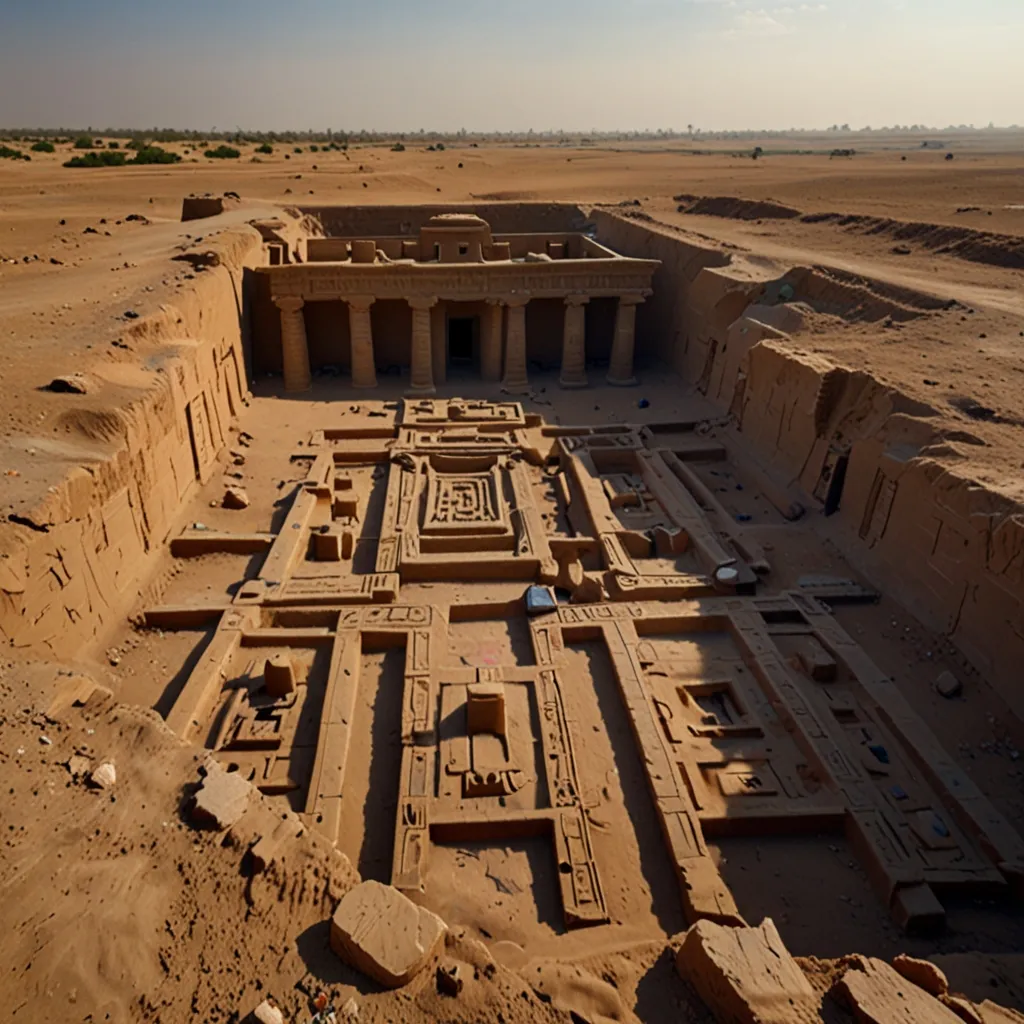Archaeologists from the British Museum made a groundbreaking discovery in southern Iraq in 2022. While excavating the ancient site of Gerso, they uncovered walls made of mud bricks. It didn’t take long for these walls to be recognized as part of two ancient temples, dating back around 4,500 years. These temples were constructed to honor the Sumerian god Ningu.
The two legendary sites, the Lord Palace of the Kings and the White Thunderbird Temple, were once only known through ancient tablets and texts. The mythos surrounding Thunderbird, closely related to Ningu, described the god as a Thunderbird or an avatar representing a larger deity. According to legend, the temples were built after a local city-state king had a series of vivid dreams about Ningu.
King Guda, the same monarch whose statues were unearthed at the same location in 1877, played a crucial role in these legends. Alongside his statues, the largest cuneiform cylinders yet discovered were found. Inscribed by King Guda himself, these writings revealed that the winged god Nuru had commanded him to build the temples in Ningu’s honor.
Archaeologists believe the visions of a gigantic Thunderbird descending from the sky could potentially be linked to extraterrestrial beings. Think about it: if you knew nothing about advanced technology and someone descended from the sky in some sort of vehicle, you would naturally interpret them as a bird-like creature with wings. This might explain why ancient texts describe such beings in mystical terms.
Ancient astronaut theorists love this hypothesis. They suggest that the Sumerians’ accounts of gods coming down from the sky could actually be describing encounters with alien spacecraft. They take this theory even further by examining the Epic of Gilgamesh. In this ancient text, Gilgamesh meets the Anunnaki at a place referred to as The Landing Place, where gods would descend from the heavens.
The Landing Place is depicted as a ship traveling from Earth to the celestial realms. In today’s context, one might interpret this as a spacecraft or a rocket ship. Gilgamesh witnessing gods descending with fire, smoke, and loud noises sounds an awful lot like a modern rocket launch, doesn’t it?
This idea aligns with theories put forth by researcher Zechariah Sitchin in his book “The 12th Planet.” Sitchin proposed that the landing place described in the epic is a massive, real-world megalithic site that can be visited even today—namely, Baalbek in Lebanon.
Baalbek is mostly known for its Roman Temple of Jupiter, built in the first century BC. But beneath this temple lies an ancient stone platform, believed to be much older and constructed with massive stone blocks—each weighing around 800 metric tons. This platform is astonishing not just because of its age but because of the sheer size of its stones.
How ancient humans might have lifted these gigantic blocks is a topic of hot debate. Ancient astronaut theorists argue that advanced technology, possibly imparted by extraterrestrials, must have been employed. They see the connection between the ancient Sumerians witnessing these otherworldly crafts and the monumental construction feats of places like Baalbek.
The story of Gilgamesh and the landing pad, along with King Guda’s encounter with a flying, winged deity, strongly suggests that the Sumerians were not just imaginative but were likely describing real experiences. The descriptions of Nuru as a Thunderbird are particularly fascinating. When hearing about a giant Thunderbird descending, it’s hard not to draw parallels with similar stories from other cultures.
For example, many Native American myths feature Thunderbird-like creatures. These Thunderbirds were said to bring knowledge and were often depicted as powerful, awe-inspiring beings. Ancient Indian texts also have similar stories. Imagine seeing a large aircraft for the first time, its thundering noise and imposing presence would naturally make one think of it as a gigantic bird.
Understanding ancient civilizations through their myths and legends is always compelling, especially when considering the possibility of misunderstood technology. Could it be that what they interpreted as divine beings or mythological creatures were, in fact, encounters with advanced, possibly extraterrestrial technologies? It’s a question that keeps the curiosity alive in historians, archaeologists, and theorists alike. Perhaps, just perhaps, these ancient stories hold more truth than fiction, giving us a glimpse into a world where gods walked the earth—or, quite literally, flew down from the sky.






